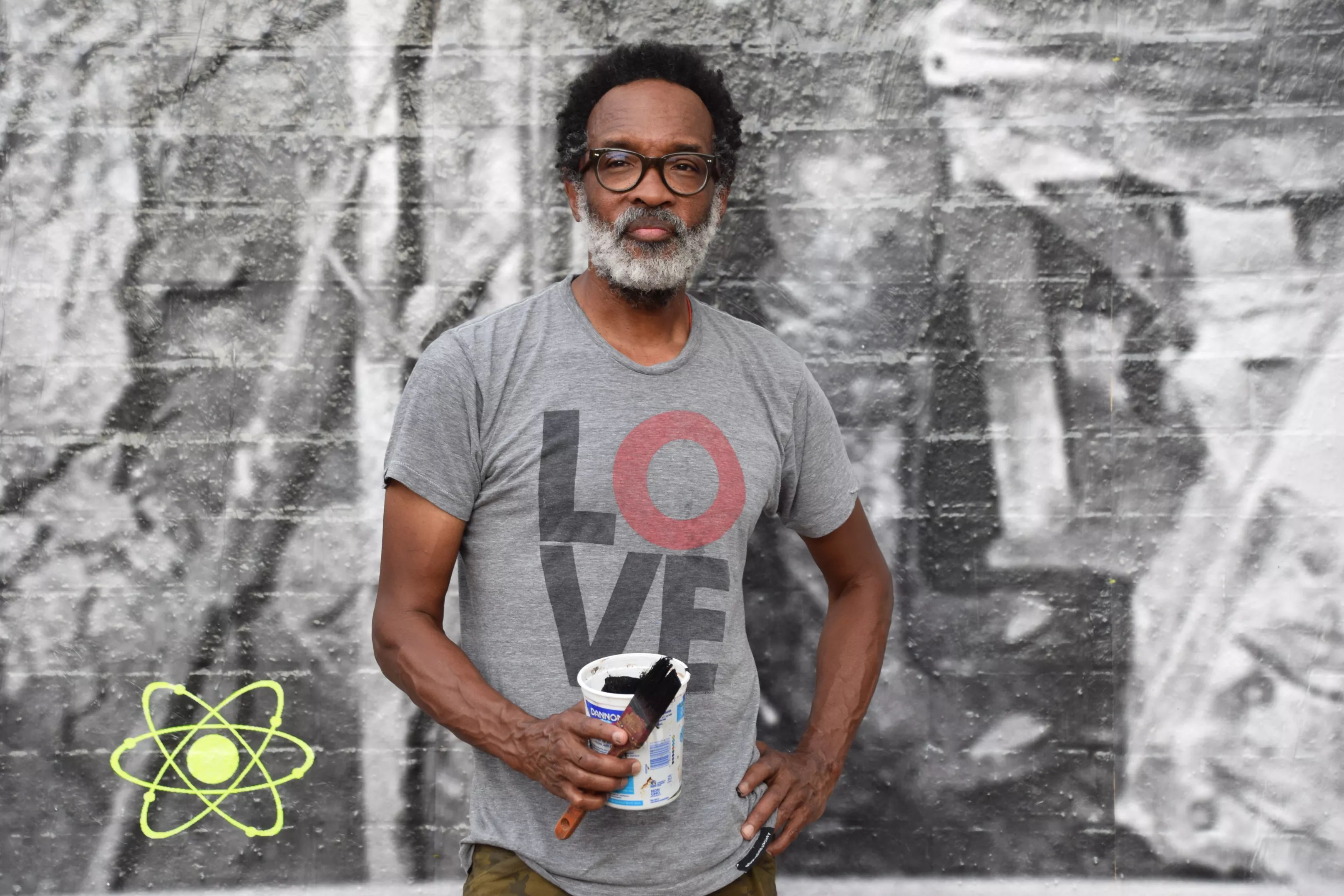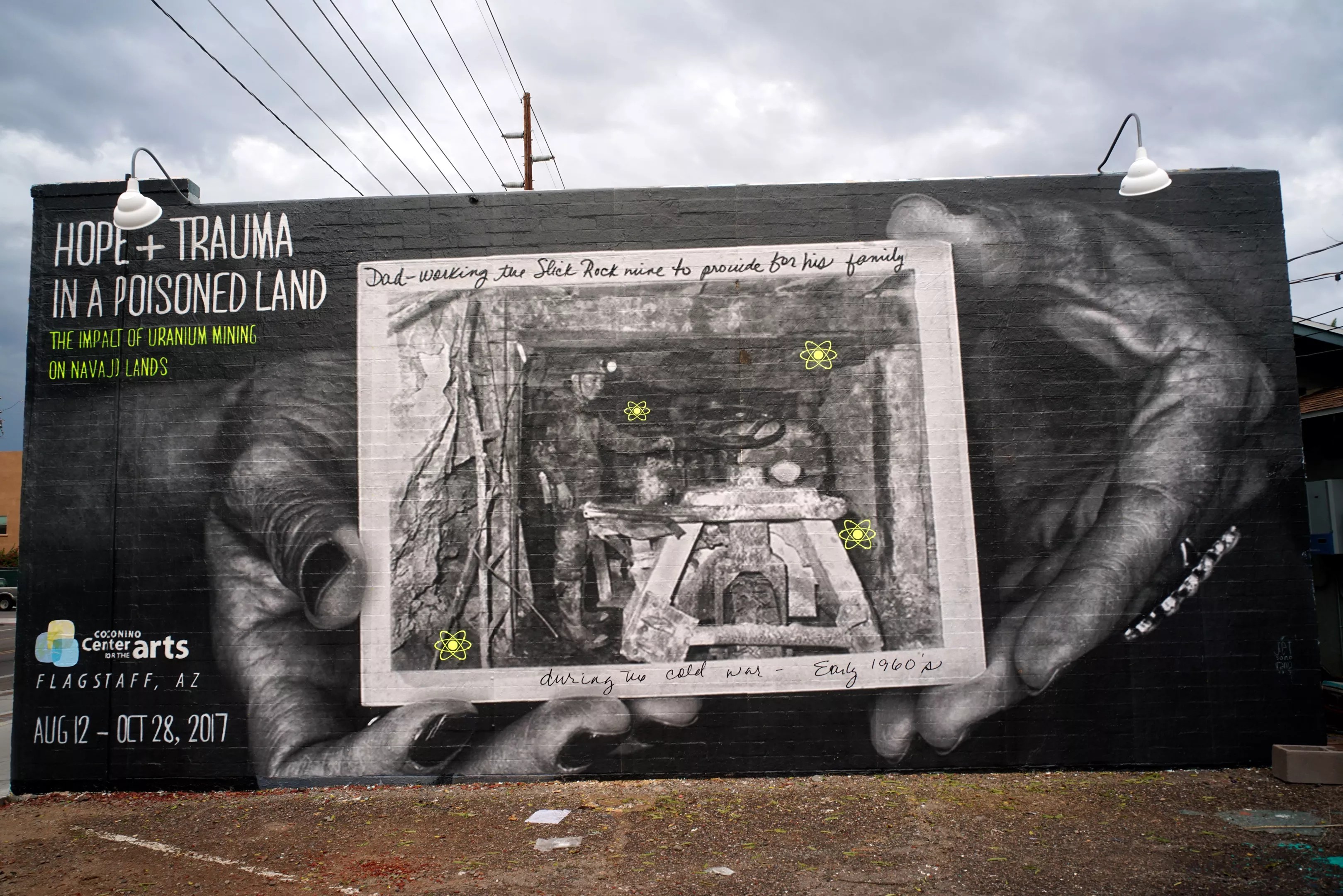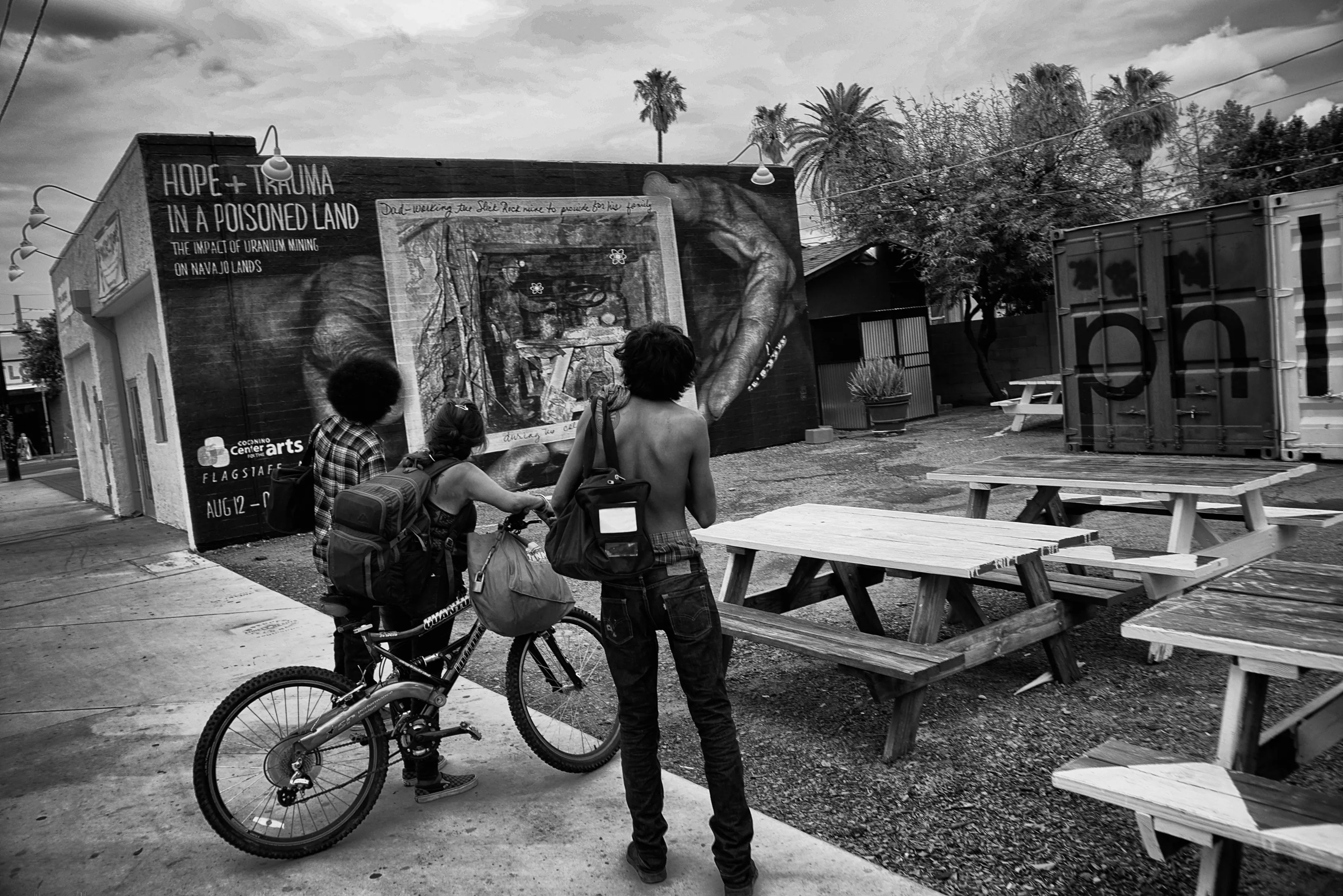
Lynn Trimble

Audio By Carbonatix
A new Chip “Jetsonorama” Thomas mural went up at Eye Lounge on Third Friday, July 21, in downtown Phoenix.
Thomas is a doctor and artist who works on the Navajo Nation, located in the northeastern corner of Arizona. It includes small parts of New Mexico and Utah. His artwork often reflects social justice themes, and he’s resided on the Navajo Nation for three decades.
The mural features a black-and-white photograph of Kee Roy John, a uranium miner on the Navajo Nation who died of a uranium-related cancer. Taken during the 1960s, the picture shows him standing in a cramped underground space, between a ladder and a large piece of mining equipment. The photograph belongs to Cyndy Begaye, the miner’s daughter.
The mural also includes four neon green symbols of radiation.
Thomas treats former uranium miners as part of his medical practice, so he’s seen the effects of uranium exposure up close. “Uranium mining impacts real people,” he says.
Rather than painting the image, Thomas had his design printed onto 22 sheets of paper that he installed with an acrylic gel adhesive that works like wheat paste.
“The method I use to put the images up is essentially the way billboards were erected from the late 1800s until the late 1900s,” Thomas says. “I appreciate that one person can make a big statement with a large-scale piece using an old-school technique.”
The mural is 14 feet tall by 30 feet wide. It’s scheduled to be up through the end of August, says John Tannous, executive director for the Flagstaff Arts Council.
The council commissioned the mural in part to raise awareness about the environmental impact and health implications of uranium mining.

Mural recently created by Chip Thomas on the west-facing wall of Eye Lounge gallery.
Chip Thomas
The mural is also an advertisement for an upcoming exhibition at Coconino Center for the Arts, located near downtown Flagstaff. The exhibition is funded in part by the National Endowment for the Arts.
Titled “Hope + Trauma in a Poisoned Land,” it runs from Tuesday, August 15, to Saturday, October 28. More than two dozen artists, including Thomas, will show work related to the impact of uranium mining on Navajo people and lands.
Nearly 30 million tons of uranium ore were extracted from Navajo Nation land between 1944 and 1986, according to exhibition materials, which also note that 1,000 abandoned uranium mines remain. Health effects for workers include kidney failure and cancer.
“We wanted to promote the show outside of Flagstaff, and we know Chip is a world-renowned artist who does these amazing murals, so we figured we’d rather support a local artist than buy traditional ads,” Tannous says.

Passersby checking out Chip Thomas’ new mural at Eye Lounge.
Chip Thomas
Thomas is creating another mural using the same image, along a section of Highway 89 north of downtown Flagstaff.
But he’s also busy with an ongoing mural project called The Painted Desert. Thomas invites well-known artists to paint murals on the Navajo Nation, so tourists passing through the area will pause to enjoy the work and support families who operate roadside stands there.
“This is the first time I’ve really thought of doing an ad,” Thomas says. “I hope people who see it will write letters to Congress about cleaning up old mines and contaminated water and land.”